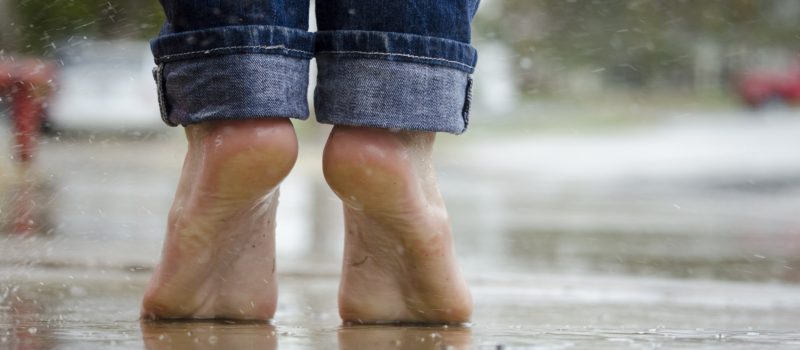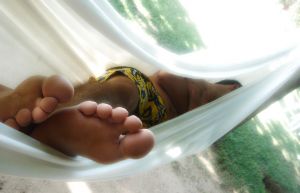
2 Major Causes of Heel Pain
 At Leading Edge Physio, we see a lot of feet. One of the most common complaints that people come to us with is heel pain. Unfortunately, when the feet hurt, there are few ways to rest them. We need to get around, and unfortunately this requires our feet.
At Leading Edge Physio, we see a lot of feet. One of the most common complaints that people come to us with is heel pain. Unfortunately, when the feet hurt, there are few ways to rest them. We need to get around, and unfortunately this requires our feet.
Plantar Fasciitis or Achilles Tendinitis… How do I know which one is causing my heel pain?
The two major causes of heel pain are plantar fasciitis and achilles tendinitis. The easiest way to figure out which one is causing your pain is by location. Generally speaking, if the pain is under your heel bone it is likely plantar fasciitis. If the pain is found at the back of the heel, in the achilles or toward the base of the achilles (the long cord that extends from your calf to your heel bone), then it is likely achilles tendinitis.
Todays Lesson – Plantar Fasciitis
The pain from this condition is caused by inflammation of a thick tissue that begins at the heel and extends to the toes. Repetitive stresses or strain cause microtears in the plantar fascia, which become much larger with continual loading. Due to the location of the tears, everyday activity such as walking and standing interferes with the rest needed for normal healing.
Common symptoms of this condition are sharp pain directly under the heel – especially with the first few steps in the morning or after sitting for a while. Pain usually eases with walking or activity and comes back worse after resting. Pain usually decreases during sleep and will seldom cause waking.
Common causes of plantar fasciitis include activity or training that is new or advanced too much or too quickly; standing for prolonged periods on concrete or hard surfaces; faulty foot mechanics like over-pronation (flat feet); tight calf muscles; increased weight; and improper footwear. It is a condition commonly seen in distance runners, accounting for 10% of all running injuries, but is just as common in the general population. Running conditions also have an effect, such as running hills and over awkward terrain.
In many of our patients, symptoms persist for months to years prior to them seeking out professional advice. They try various home remedies from rolling a golf ball on their heel, stretching, wearing night splints and avoiding all weight bearing activities altogether. They wake every morning with the hope that the first step won’t be painful.
Early diagnosis and intervention is important. A course of physical therapy is non-invasive and can be very successful.
But I was told that I have a Heel Spur
Patients and doctors often confuse the terms heel spur and plantar fasciitis. While these two diagnoses are related, they are not the same. Plantar fasciitis refers to the inflammation of the plantar fascia–the tissue that forms the arch of the foot. A heel spur is a hook of bone that can form on the heel bone (calcaneus) and is associated with plantar fasciitis.
About 70 percent of patients with plantar fasciitis have a heel spur that can be seen on an X-ray. However, many patients without symptoms of pain can have a heel spur. The exact relationship between plantar fasciitis and heel spurs is not entirely understood.
The heel spur itself is not likely the primary cause of pain, rather inflammation and irritation of the plantar fascia is thought to be the major contributing factor.
What can I do about my heel pain?
Self-management may include using ice, stretching, wearing proper footwear and altering training methods. Ice should be applied prior to and following activity for approximately 20 minutes. Try using a frozen 12-16 oz. bottle of water and gently rolling it under the arch and heel.
The calf muscles can be stretched by standing facing a wall. Step your sore foot back and while keeping that heel down, lean forward until a comfortable pull is felt in the back of the lower leg. Hold this stretch for 30 seconds and repeat.
Recently research has shown that stretching the great toe back toward oneself from a seated position (with the leg crossed over the knee) can be a very effective self management technique.
Generally we also advise that you swap walking and jogging for swimming or bicycling.
If you must continue training or have a job/sport that demands prolonged walking or standing (I.e. golfers), it is essential to minimize the stresses on the heel. Start by purchasing a pair of heel cushions. If the pain persists greater than 3 weeks… Speak to our physiotherapists about our successful plantar fasciitis protocol. At Leading Edge, we have developed a plantar fasciitis protocol that has been invented and revised by our therapists over the past 19 years. We are able to provide relief, often within 3 treatments. In extremely resilient cases (greater than 6 months), Radial Shockwave may be right for you.
OR… “Find out what thousands of others with heel pain from plantar fasciitis have learned from me and start your own recovery today – it’s not the same as seeing one of us in person but education is the first step to recovery”:
If this sounds like you and if you don’t live near us in Edmonton, Alberta and you are suffering from heel pain: You can also learn more about this condition and what I teach a patient with plantar fasciitis for a fraction of the cost of seeing a physiotherapist in person.
In Health, Grant Fedoruk
Disclaimer: no information on this page is meant to replace or appear to provide care that is best provided by medical professionals.

I work in a factory and I stand and walk on concrete at least 50 hours a week. I rarely get a chance to sit. Recently the pain in my heels is excruciating. I found a lump in the bottom of my foot about a year ago. I was told I needed orthotics. Who can afford those. I’m a working stiff. I have also in the past had problems with Achilles heel. I can barely walk by the end of my shift some days. Most days.
Hi Michelle, I have posted a video in the learning section of our website. I made the video to reach the many people who are unable to afford treatment. It doesn’t replace first hand medical advice but it may offer you some important information. I hope that it can answer some questions for you.
My heel all of a sudden just started hurting really painful throbbing pain. Its almost breath taking. Its more on the inside part of the side of it. I carry heavy furniture up and down stairs. And stand in concrete all day. I also have on both feet plantar fibroma. They don’t hurt near as bad. What should I do?
Confirm a diagnosis asap and begin to act on it. Our learning video will offer you most of the information about how we assess and manage plantar fasciitis. http://www.leadingedgephysio.com/learning
My heel feels like a knife stabbing into the bottom and back of my heel and it hurts like nothing else especially after running either a fast short distance or a slow long distance
I have severe heel pain. Specifically on the side of my heel. The pain is severe when I walk after I wake up in the morning or after sitting for sometime. What could be the cause? Any home remedies to resolve this? TIA
Yes, please go to http://www.leadingedgephysio.com/learning and you can see what we teach people with plantar fasciitis to manage their own condition.